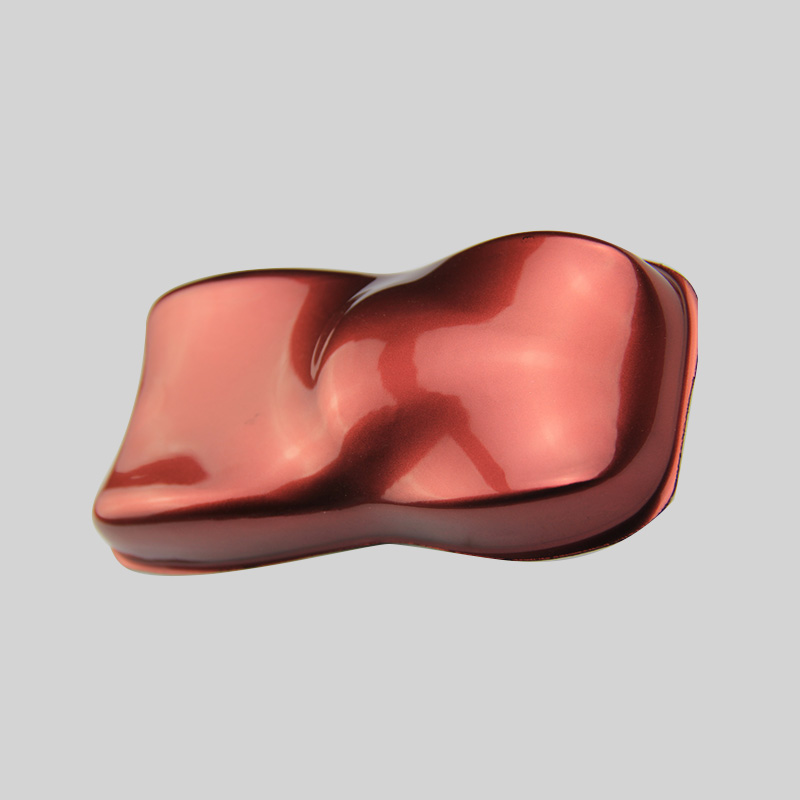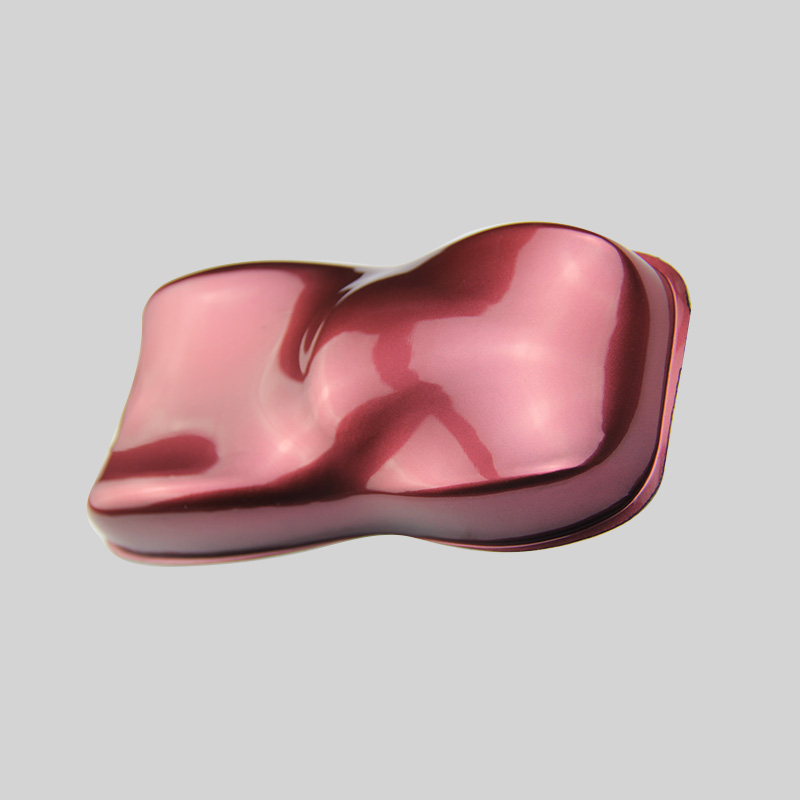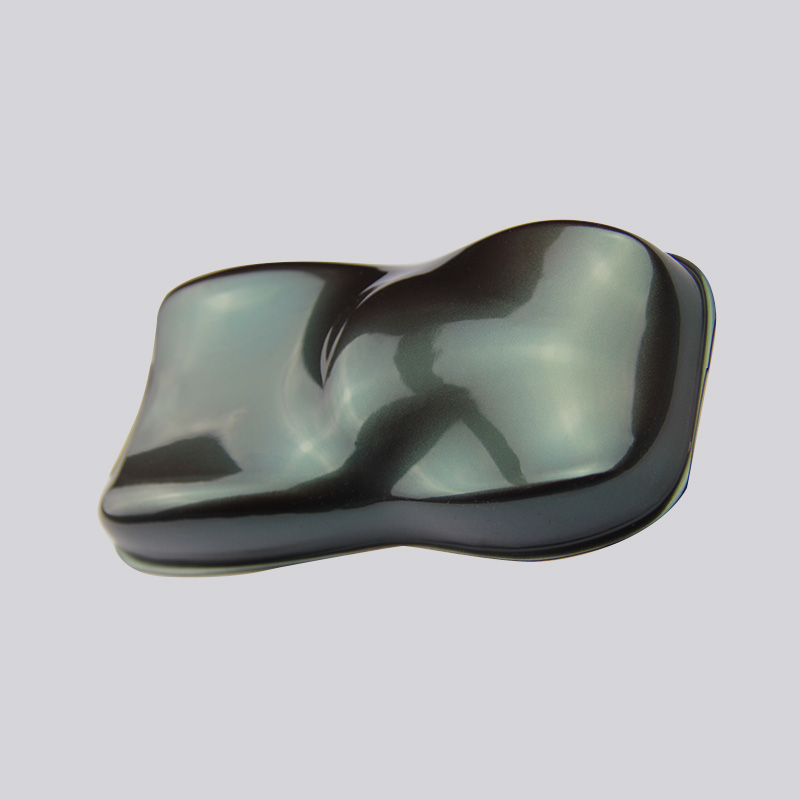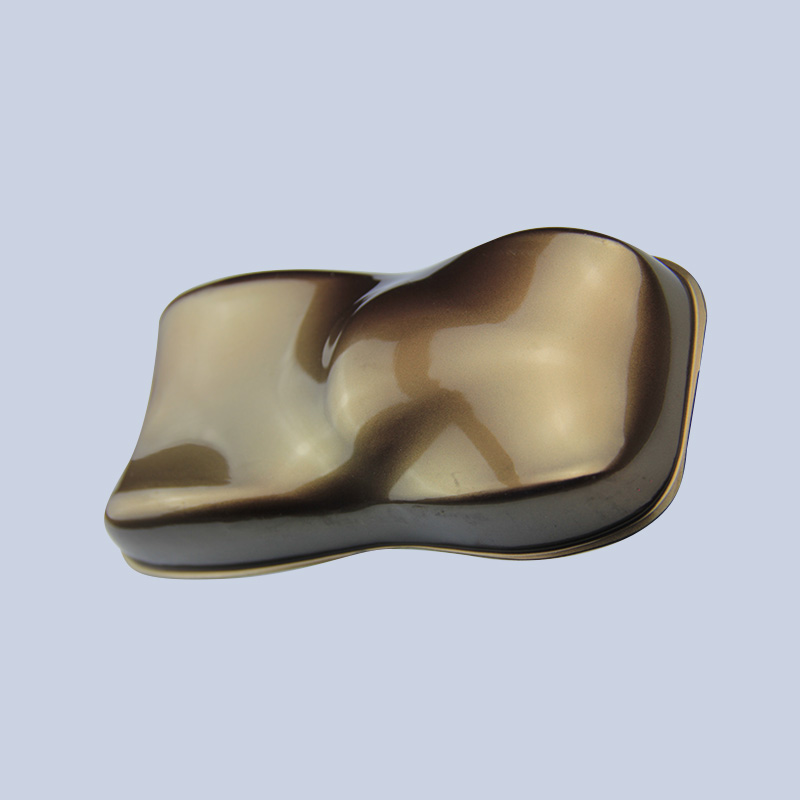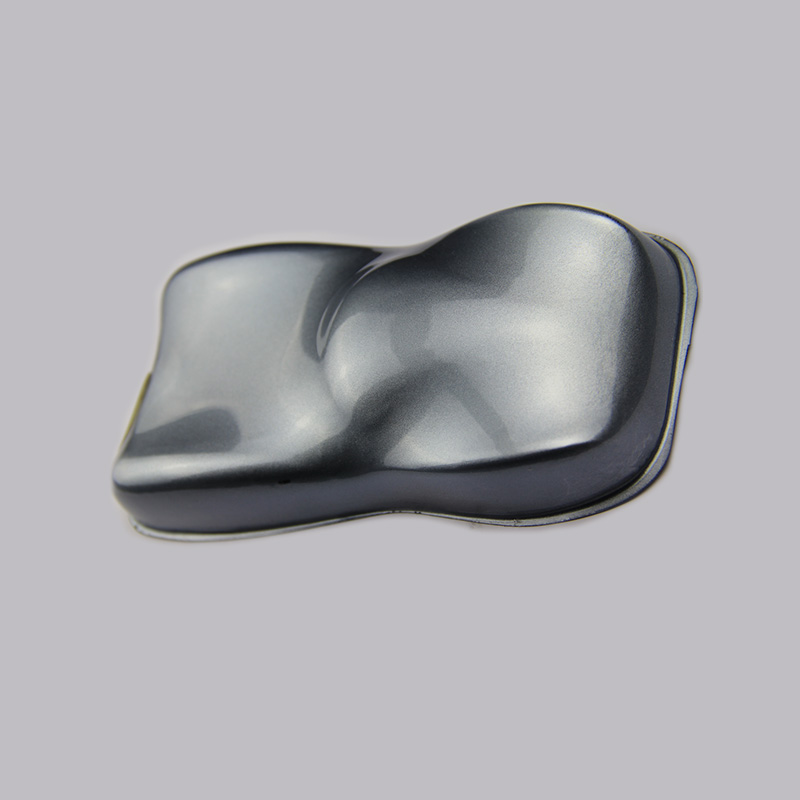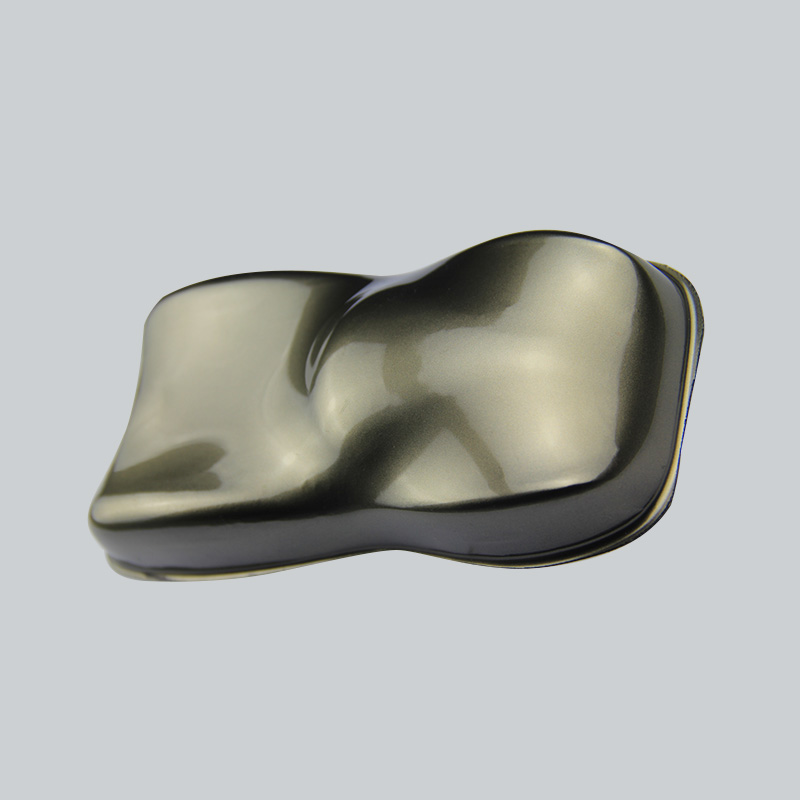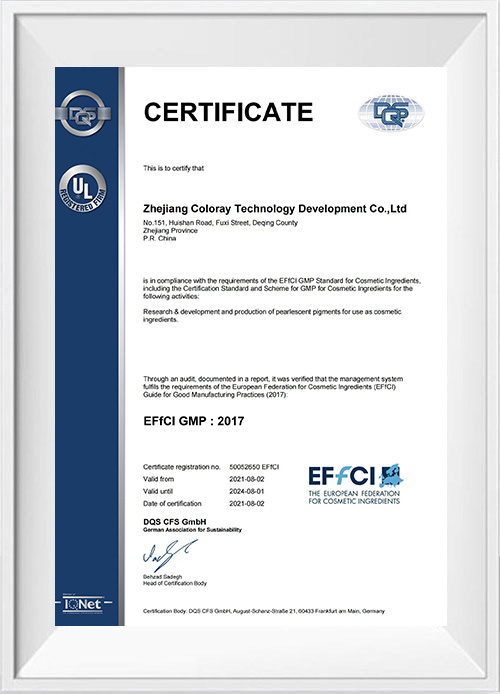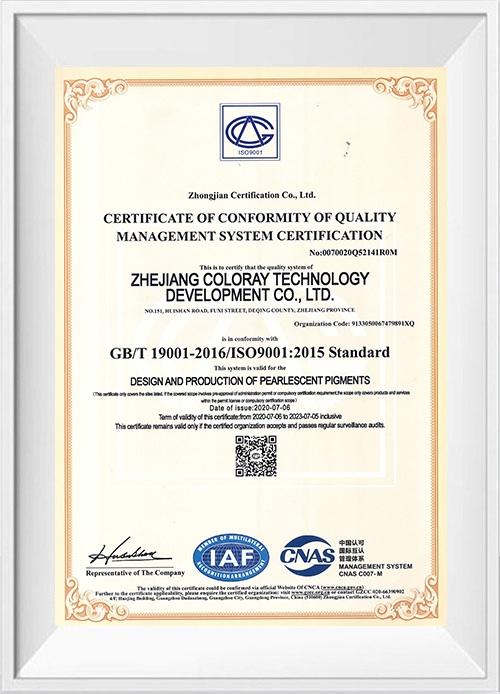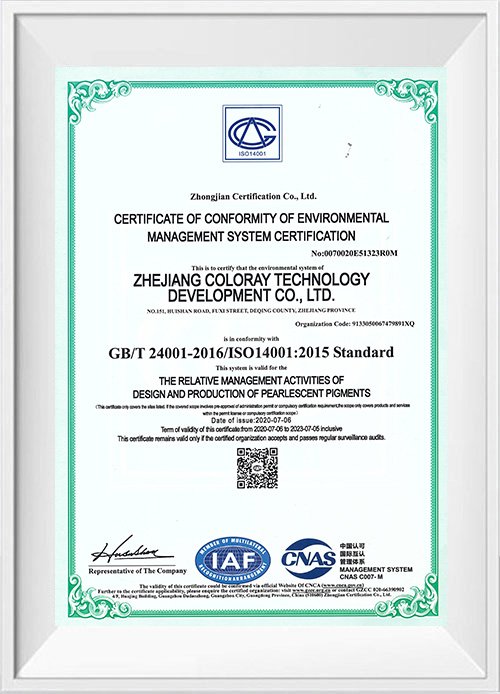What are the factors that affect weather-resistant pearlescent pigments?
The factors that affect weather-resistant pearlescent pigments mainly include the following aspects:
Pigment matrix and ingredient selection: Weather-resistant pearlescent pigments are usually composed of specific pigment matrices and ingredients, such as titanium dioxide (TiO2), iron oxide and other metal oxides. The choice of these matrices directly affects the weather resistance and light stability of the pigment.
Pigment particle structure and shape: The particle structure and shape of pearlescent pigments have an important influence on their weather resistance. Pigments with excellent weather resistance usually have uniform particle size and shape, which can effectively resist the erosion of the external environment.
Surface treatment and coating: In order to enhance the weather resistance of pigments, special surface treatments or protective coatings are often applied. These treatments can improve the pigment's UV resistance, stain resistance and chemical erosion resistance.
Addition of UV stabilizers and antioxidants: During the manufacturing process, special UV stabilizers and antioxidants are often added to enhance the stability of the pigment under ultraviolet radiation and prevent the pigment from changing color and losing gloss.
Chemical composition and compatibility: Weather-resistant pearlescent pigments must maintain good chemical compatibility with the coating base and other additives, otherwise it may cause uneven dispersion or failure of the pigment in the coating.
Environmental factors: External climatic conditions, such as high temperature, low temperature, high humidity, etc., as well as pollutants such as acid rain and chemicals, will affect the performance of weather-resistant pearlescent pigments. Pigments need to be able to maintain stability in various harsh environments.
Mechanical wear and abrasion resistance: In practical applications, weather-resistant pearlescent pigments must also have certain mechanical wear and abrasion resistance, and be able to resist damage caused by daily use or physical wear.
How to improve the weather resistance of weather-resistant pearlescent pigments?
Improving the weather resistance of weather-resistant pearlescent pigments is a complex task involving pigment science, material engineering and application technology. Here are some key methods and strategies that can effectively improve the weather resistance of weather-resistant pearlescent pigments:
Pigment matrix selection: Selecting a pigment matrix with good weather resistance is the key to improving weather resistance. Commonly used pigment matrices include metal oxides such as titanium dioxide (TiO2), iron oxide, and zinc oxide, which have good light stability and antioxidant properties.
Adding UV stabilizers: UV stabilizers can effectively absorb and disperse ultraviolet radiation to prevent pigments from decomposing or changing color under ultraviolet light. Select UV stabilizers suitable for the pigment matrix and application environment for addition.
Antioxidants and antifouling agents: Adding antioxidants and antifouling agents can improve the resistance of pigments to chemicals and pollutants, extend the service life of pigments and maintain color stability.
Particle shape and size control: Controlling the shape and size of pigment particles can improve their dispersibility and stability in the coating, thereby improving the weather resistance of the coating.
Surface treatment and coating: Special surface treatment or coating of pigments, such as silane treatment, silica coating, etc., can enhance their stability and anti-fouling properties in the external environment.
Compatibility testing: In the coating formula, ensure the compatibility of pigments with other formulation ingredients (such as resins, solvents, additives, etc.) to avoid degradation of coating performance due to chemical reactions or phase separation.
Optimize production process: Finely control the amount of pigment added, mixing speed and time, and use efficient stirring equipment and production processes to ensure uniform dispersion and stability of pigments in the coating.
Environmental simulation testing: Use accelerated aging tests and environmental simulation laboratories to simulate exposure under different climatic conditions and evaluate the stability and durability of pigments under conditions such as ultraviolet rays, high temperature, humidity, and salt water.
Field testing and verification: Conduct field application tests to monitor the performance and long-term stability of pigments in actual external environments, collect feedback data and make necessary adjustments and optimizations.
New materials and technology applications: Continuously pursue the research and development and application of new materials, such as nanotechnology, functional coating technology, etc., to improve the weather resistance and functionality of pigments.
Environmental protection and sustainable development: Develop new weather-resistant pearlescent pigments that meet environmental standards, reduce the impact on the environment, and improve the sustainability and recyclability of pigments.
